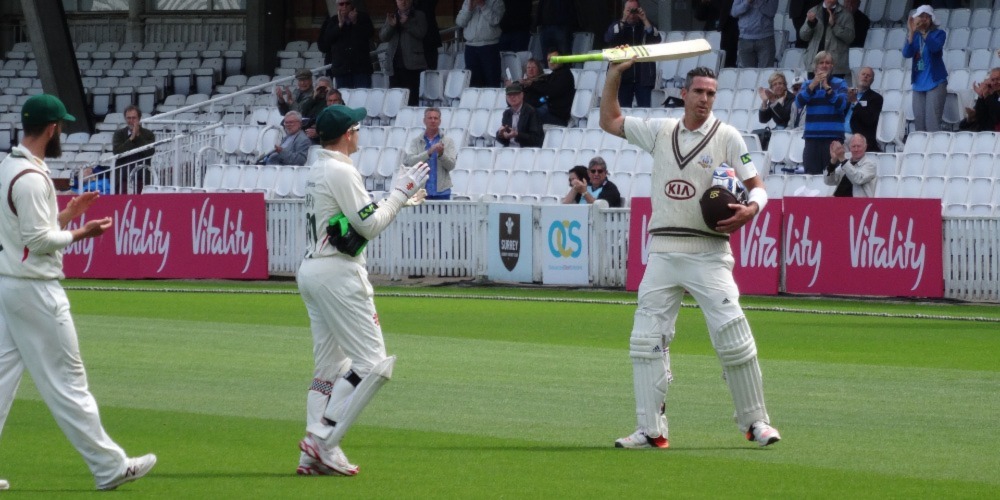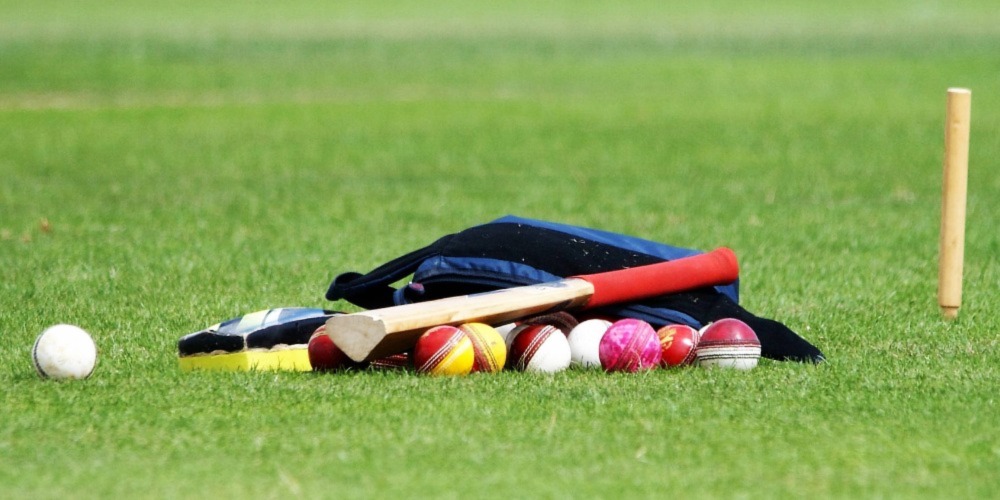Cricket is a famous sport that is followed all around, especially in the South-Asian region. If you have not followed cricket since your childhood, you might be struggling to learn the rules. Well, cricket might seem complicated to understand at times but it is not as difficult as you think. In the beginning, when you started to learn the rules, the concept of two batsmen and 11 players on the fielding side might be easier to grasp.
You also would have learned how all the different formats T20, Tests, and One Day work. While you were watching the T20 cricket, the scoreboard on the television says powerplay overs. Have you started wondering now what is powerplay in cricket? Were all the earlier rules not enough to understand the cricket?
Don’t worry, understanding powerplay is not an uphill task. You just need to have prior knowledge of basic cricket rules to understand the powerplay. Are you familiar with the concepts of the 30-yard circle? Cricket Mastery best defines the concept of the 30-yard circle, “ The 30-yard circle in cricket is also known as the inner circle. It’s marked out by two semi-circles at a 30-yard (27m) radius from the middle stumps at each end. These semi-circles are joined by lines running parallel to the wicket and this separated the ‘infield’ and the ‘outfield’.”
Are You Confused About What is Powerplay in Cricket?
Now you are wandering in a valley of thoughts in your mind! How could powerplay be somehow related to the 30-yard circle? What’s the connection between both terms? You now need to pay your full concentration and attention to the words. Powerplay is the specific amount of overs during which the fielding team is allowed to have only two fielders outside the circle. In the One Day game, the powerplay overs are the first 10 overs of the innings.

In the shortest format of the game, T20 cricket, the powerplay overs are the first 6 overs of the innings. At this time, you just need to understand that during some overs, only a specific amount of fielders are allowed outside the circle.
The restriction on the number of fielders could vary according to the powerplay number, i.e PP 1, PP 2, or PP 3. We will be discussing all types of powerplay in cricket in this article. But first, let’s study some history and know why there was a need for powerplay in cricket. Have you developed an interest in cricket? If yes, then why not go to the best online sportsbook sites in the UK and check the odds of your favorite cricket games?
Why Powerplay in Cricket was Introduced?
In the era of the 1970s and 1980s, when ODI cricket was initially introduced, the batsmen were only used to play the longest format of the game. The game was shortened and rule-makers introduced ODI cricket but there were some sets of rules which were needed to distinguish between ODI and Tests.
Earlier, while playing the ODI format, the batsmen were fixed to the same approach of playing defensively, as in Test cricket. So what was required to change the dynamics of the game to bring the excitement into a different format? To solve this issue, fielding restrictions were introduced in cricket. The fielding restriction term was not called powerplay during these years.
Fielding Restrictions in 1980s cricket
The first time fielding restrictions were introduced in cricket, was during the One Day International game in 1980. As a result of bringing the fielding restrictions into the game, the batsmen started shifting their gears. They shifted their mindset to the aggressive side during the overs where the fielders were restricted.
Changes in fielding Restriction rules in 1992
In the year of 1992, International Cricket Council (ICC) decided to make some amendments to the rules. According to the rulebook, there must be at least 2 fielders in the catching position.

Now you might be wondering what is the catching position? Remember you learned earlier about the 30-yard circle in the article? Well, you could say that the catching position is the other version of the 30-yard circle with some changes. You don’t need to puzzle your mind and just pass on! The earlier information we learned about the 30-yard circle is enough to help you understand, what is powerplay in cricket.
Introduction of the Term Powerplay in Cricket
With the arrival of the shortest format of the game, Twenty20 cricket, the rules needed to be demonstrated clearly. So ICC decided to introduce the term powerplay in cricket. The rules of powerplay now are extremely different compared to the earlier times.
2005
Powerplay was introduced in 2005. During the earlier days, the fielding team had the option to choose the optional powerplay. The fielding sides were used to impose the fielding restrictions when the batting team was unsettled with the lost wickets. This situation took batsmen to a tricky position. They wondered whether they should save their wickets or take the risk during the powerplay overs.
Watching all the scenes, ICC decided to bring some more changes to the fielding restrictions. The batting team was allowed to take one powerplay of its own choice. With the introduction of the term ‘batting powerplay’, the batting team gained a wonderful benefit.
Whenever the batting team needed to escalate its scoring rate, it used to take the powerplay. However, in the need of scoring runs at a fast rate, batsmen started to lose wickets. Some teams preferred to take the powerplay in the death overs (45-50). This idea brought the fielding side into the backfoot position. Nothing the bowling side could do to stop the fireballs from the power hitters.
2011
The batting team started to take the advantage of the rule. It used to take the powerplay only in the last 10 overs. As a result, the team used to accelerate heavily in the final overs.
To deal with this issue, International Cricket Council (ICC) again decided to bring changes to the rules. In 2011, both batting and bowling sides had to take the powerplay between 16 to 36 overs. This rule was was also changed soon in the following year.
2012
International Cricket Council decided to bring major changes to the rules. The rules which came this time were favorable to the batsmen. In a One Day International game, there were two powerplays. The first powerplay was the mandatory powerplay that ran from the 1st over until the 10th over.
The other powerplay was the batting powerplay which teams were allowed to take from the 16th over to the 36th over. During the non-powerplay overs, the fielding teams were allowed to only have four players outside the circle.
In the years, when this rule was implemented, high-scoring games started happening. This powerplay rule did not look like a final solution. The game seemed fun when the batsmen were smashing the ball all around the park. But there was no balance between the bat and ball. It gave an unfair advantage to the batsmen. Cricket turned out to be more of a batting game. This issue needs to be resolved because the bowlers were feeling the pressure.
Current Rules of Powerplay in Cricket
Does the oldest format of the game, Test cricket has the powerplay? No, there is no powerplay in Test matches. The terms of powerplay only come in the limited-overs cricket of T20 and One Cricket. You need to know that powerplay works differently in ODI cricket and T20 cricket.

The basic concept in which you learned about the restriction on the fielders is the same. Just the restriction on the number of fielders outside the circle varies according to the type of powerplay.
ODI Cricket:
There is nothing complicated in understanding what is powerplay in ODI cricket. Just remember, there are three types of powerplay in ODI cricket.
Powerplay One: The first powerplay runs for the first 10 overs of the innings (1-10 overs). A maximum of only two fielders are allowed outside the 30-yard circle during the first powerplay.
Powerplay Two: The second powerplay starts from the 11th over and runs until the 41st over of the innings (11-41 overs). A maximum of four fielders are allowed outside the 30-yard circle during the second powerplay.
Powerplay Three: The second powerplay starts from the 41st over and runs until the last over of the innings (41-50 overs). According to the rules, a maximum of five fielders are allowed outside the 30-yard circle during the third powerplay.
Note: The number of overs in each powerplay might vary in the case of the rain-affected game.
Click here to check out the latest cricket odds at the 22bet Sportsbook
T20 Cricket:
As you have learned about the powerplays in ODI cricket, it would be easy peasy for you to learn about what is powerplay in T20 cricket.
Powerplay One: The first powerplay of the T20 innings runs for the first six overs only. During the first six overs, only the two fielders are allowed outside the circle.
Rest of the Overs: From the (6th over to 20th over), the fielding team is allowed to have no more than 5 fielders outside the 30-yard circle. On the leg-side trajectory, a maximum of 5 fielders is allowed in both areas of the ground, i.e., the 30-yard circle and outside the 30-yard circle.
Now as you have learned the rules of the powerplay, you might want to go to the best online sportsbook sites in the UK and see which team has the most chances of scoring at a higher rate during the powerplay.
Conclusion:
Powerplay is one of the most significant rules of cricket. Once you understand it, you know how important it is to create balance in the game. Cricket is one of the most followed sports in the world. If you are new to following cricket, you must be enjoying learning about the gentlemen’s game.
There is a general misconception that cricket is a hard game to understand. You need lots of equipment to play the game. It’s the most boring sport.
If you live in Europe and by chance, you have a South Asian friend, ask how exciting the sport is. Watch the next enthralling game between Pakistan and India, which is watched by 1 billion people globally.
Check the enthusiasm and excitement of the fans. Look at the intensity of the contest whenever it happens. When you start gathering your interest, and learn the rules like powerplay in cricket, you will surely fall in love with the game.
Click here to try the best odds at 22bet Sportsbook